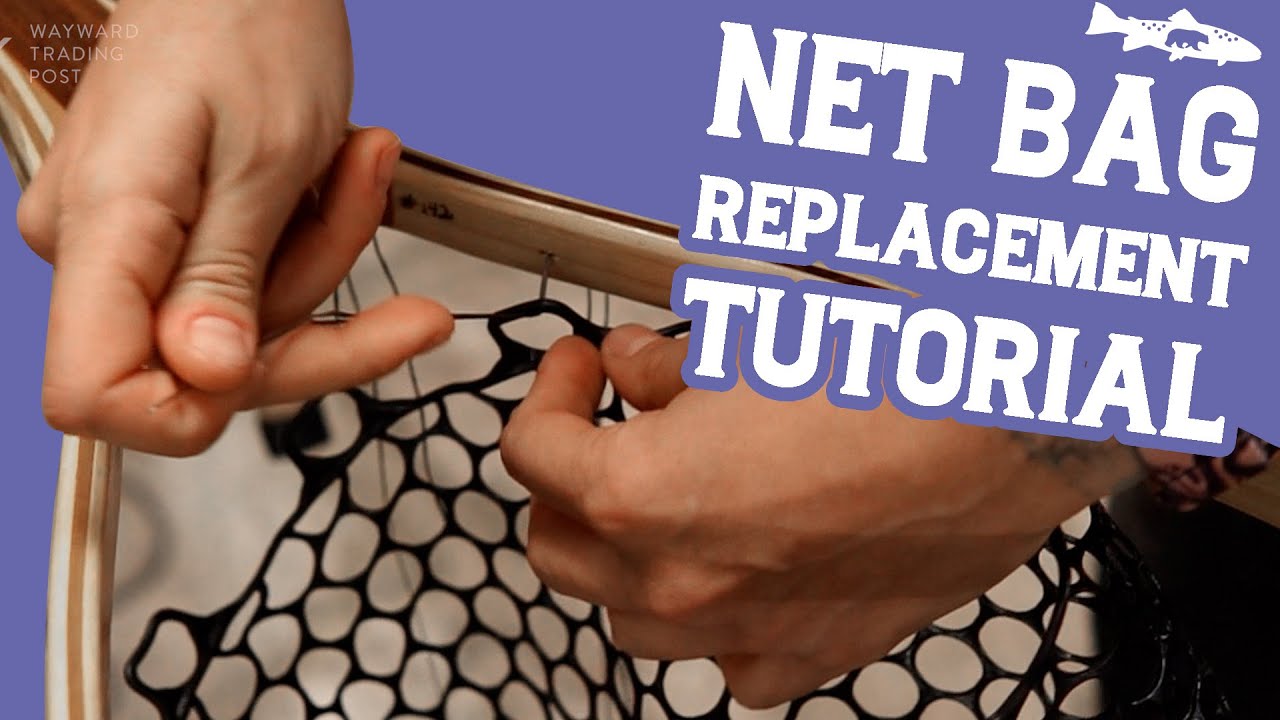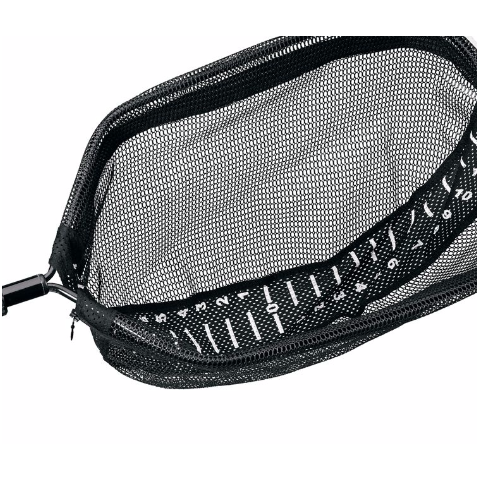How to Measure for a Replacement Fishing Net

To measure for a replacement fishing net, you need to carefully measure the width and depth of your existing net, ensuring a proper fit for your replacement net. In addition, make sure to measure the length of your net to ensure it will be the right size for your fishing needs.
Proper measurements are crucial for finding the right replacement net that will work effectively and provide the best fishing experience.

Credit: www.feather-craft.com
Choosing The Right Fishing Net Replacement
Choosing the right fishing net replacement is crucial for a successful fishing experience. It is important to ensure that your replacement net fits properly to avoid any potential issues. When selecting a replacement net, there are several factors to consider.
Firstly, consider the size of the net and match it to the species of fish you plan on catching. Secondly, pay attention to the material of the net, as different materials are better suited for different fishing conditions. Additionally, take into account the handle length and grip of the net, as this can affect your ability to effectively land fish.
Lastly, consider the durability and quality of the net to ensure it will withstand regular use. By following these guidelines, you can measure for a replacement fishing net that meets your specific needs.
Measuring Your Fishing Net For Replacement
Whether you’re a seasoned angler or just starting out, knowing how to measure your fishing net for replacement is essential. Follow these simple steps to ensure accurate measurements. First, lay your fishing net flat on the ground or a table.
Next, measure the width of the net by starting at one edge and extending to the opposite edge. Then, measure the length of the net by starting at one end and measuring all the way to the other end. Additionally, don’t forget to measure the depth of the net by measuring from the top of the net to the bottom.
Lastly, record your measurements in inches or centimeters for reference when purchasing a replacement net. By following these steps, you can easily find the perfect replacement fishing net that fits your needs.
Understanding Fishing Net Terminology
When measuring for a replacement fishing net, it’s crucial to understand the terminology associated with fishing nets. This knowledge will help you accurately determine the size and type of net you need. Familiarizing yourself with key fishing net terms is essential before making a purchase.
Some common components of fishing nets include the mesh, which refers to the spacing between the net’s knots or intersections. Another important term is the twine, which refers to the material used to construct the net. It is important to know the stretch of the netting material and the size of the netting mesh to ensure a proper fit for your specific fishing needs.
By understanding these key terms, you can confidently measure for a replacement fishing net that suits your requirements.
Selecting The Correct Fishing Net Material
Choosing the right fishing net material is crucial when it comes to replacing your old net. Different types of fishing net materials have various benefits that you should consider. Factors to keep in mind while selecting the material include the net’s durability, strength, and resistance to abrasion.
Nylon nets are popular due to their strength and resistance to uv rays. Monofilament nets are great for catching small fish and are resistant to gill damage. If you’re looking for a lightweight option, consider a polyethylene net. By considering these factors and understanding the benefits of each material, you can easily measure for a replacement fishing net that suits your needs.
Determining The Mesh Size For Your Replacement Net
Determining the mesh size of your replacement fishing net is crucial for its performance. The mesh size refers to the size of the individual holes in the net, and it directly impacts how well the net performs in catching fish.
To measure the mesh size of your current net, you can use a ruler or measuring tape. Start by counting the number of holes within a given section of the net. Next, measure the length of the section and divide it by the number of holes.
This will give you the mesh size in inches. It’s important to measure multiple sections of the net to ensure accuracy, as mesh size can vary throughout. By determining the correct mesh size for your replacement net, you can ensure that it will effectively catch fish during your fishing expeditions.
Choosing The Proper Depth For Your Fishing Net Replacement
Choosing the right depth for your fishing net replacement is crucial to maximize your catch. The net depth directly affects its ability to capture fish effectively. To determine the appropriate depth for your needs, follow these steps. First, consider the type of fish you intend to catch as different species swim at different depths.
Next, measure the depth of the water where you plan to fish using a depth finder or a fishing line with weight. Then, subtract a few feet from the measured depth to ensure the net does not touch the bottom.
Additionally, take into account the net’s buoyancy and mesh size, as these factors can influence its performance. Finally, test the net in varying depths to find the optimal setting for your fishing needs. By following these guidelines, you can ensure success with your replacement fishing net.
Assessing The Durability Of Replacement Fishing Nets
Assessing the durability of replacement fishing nets entails considering various factors. One key consideration is the material used in the construction of the net. Opting for a net made from high-quality materials, such as nylon or braided polyethylene, can enhance its lifespan.
Another crucial factor is the mesh size. Smaller mesh sizes tend to be more durable and prevent fish from getting entangled. Additionally, the design and construction of the net, including the type of knots used, can significantly impact durability. It is also important to take into account the intended use of the net and the conditions it will be subjected to.
Factors like water salinity, exposure to sunlight, and potential impacts from debris or marine life should all be considered when selecting a replacement net with a suitable lifespan. By carefully assessing these factors, anglers can ensure they choose a durable fishing net that will withstand the test of time.
Taking Care Of Your Replacement Fishing Net
To ensure the longevity of your replacement fishing net, it is crucial to follow some best practices for maintenance and cleaning. Firstly, always rinse your net with fresh water after each fishing trip to remove any salt or debris. Secondly, check for any signs of damage, such as holes or tears, and mend these promptly to prevent further deterioration.
Thirdly, avoid storing your net in direct sunlight, as uv rays can weaken the materials over time. Additionally, periodically inspect the knots and connections of your net to ensure they are secure. Moreover, consider using a net repellent spray to protect against potential damage from fish scales or slime.
By adhering to these tips, you can extend the lifespan of your replacement fishing net and continue enjoying successful fishing trips for years to come.
Troubleshooting Common Fishing Net Replacement Issues
Proper measurement is crucial when replacing a fishing net to avoid common issues. Ensure accuracy in measuring length, width, and depth before purchasing a new net. Check for any tears or damage in the old net to determine the best replacement option.
If the new net seems smaller or larger, adjust the measurements accordingly. Be aware of mesh size requirements, as this can affect the catch of different fish species. If you encounter any problems during the replacement process, consult online tutorials or seek advice from experienced anglers.
Following these steps will help you avoid common pitfalls and ensure a successful fishing net replacement experience.
Frequently Asked Questions Of How To Measure For A Replacement Fishing Net
How Do You Measure For A Replacement Net For A Fishing Net?
To measure for a replacement fishing net, follow these steps: 1. Lay the net flat on the ground and remove any knots or tangles. 2. Measure the width of the net by stretching it out from one side to the other.
3. Measure the length by extending the net from end to end. 4. These measurements will determine the size of the replacement net you need. Remember, accuracy is crucial when measuring for a replacement net to ensure a proper fit and successful fishing experience.
How Are Fishing Nets Measured?
Fishing nets are measured in various ways to determine their size and capacity. The most common method is by the length of the net, which is typically measured in meters. For example, a net may be described as 10 meters long.
Another measurement used is the mesh size, which refers to the spacing between the knots or openings in the net. Mesh size is typically measured in millimeters. The larger the mesh size, the larger the fish that can be caught.
Additionally, the thickness or strength of the netting material may be measured in terms of its weight or breaking strength. This is important for determining the durability and functionality of the net. Overall, fishing nets are measured using a combination of length, mesh size, and strength to accurately assess their size and capabilities.
How Do You Measure Mesh Size Of Nets?
Mesh size of nets is measured by counting the number of openings in a linear inch. Use a measuring tool with marked increments to count the mesh openings within one inch. Align the tool perpendicular to the netting and count the openings by lining them up with the increments on the tool.
The number of openings per inch represents the mesh size of the net. For example, a net with 10 openings per inch would have a mesh size of 10. This measurement is essential for determining the net’s suitability for specific applications, such as fishing or gardening.
A higher mesh size indicates smaller openings, suitable for catching smaller fish or excluding smaller pests. Conversely, a lower mesh size provides larger openings, ideal for catching larger fish or allowing more sunlight to reach plants.
How Do You Measure A Fishing Net Hoop?
To measure a fishing net hoop, start by measuring the diameter of the hoop. This can be done by stretching a measuring tape or ruler across the center of the hoop from one side to the other. Ensure the tape or ruler is pulled taut for an accurate measurement.
Record the measurement in inches or centimeters. Next, measure the depth of the hoop by starting at the center and extending the measuring tape or ruler down to the bottom edge of the hoop. Again, keep the tape or ruler taut for an accurate measurement.
Record the depth measurement in inches or centimeters. These measurements will provide the dimensions of the fishing net hoop, which can be useful for determining its size and compatibility for specific fishing purposes.
Conclusion
Measuring for a replacement fishing net doesn’t have to be a daunting task. By following the step-by-step guide outlined in this blog post, you can ensure that you find the perfect net to meet your needs. Remember to accurately measure the width, length, and depth of your net, taking into consideration any additional features or attachments you may require.
By doing so, you can avoid purchasing a net that is either too small or too large for your fishing purposes. Whether you are an experienced angler or a beginner, having the right net is essential for a successful fishing trip.
So don’t underestimate the importance of proper measurements. With the right information and a little bit of effort, you’ll be able to cast your net with confidence, knowing that you have made the right choice for your fishing adventures.
